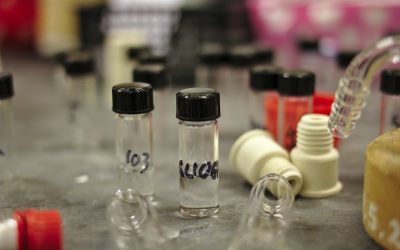Explore the World Through Geography, Natural Resources & Daily History
Clear, reliable and engaging guides that help you understand our planet — from UK geography education to global natural resources and On This Day history events.
Explore, discover, and learn about the wonders of our world! At Earth Site, we’re passionate about bringing geography, history, and science to life for curious minds of all ages. Whether you’re delving into historical events, uncovering the mysteries of the natural world, or seeking interactive resources, you’re in the right place.
Here, you can uncover the stories behind historical events, explore the natural wonders of our planet, and gain valuable insights into how the Earth’s systems shape our daily lives. From the towering peaks of mountain ranges to the far-reaching impacts of human innovation, we aim to make every topic both engaging and informative.
Start your journey of discovery with us today, and let’s make learning an adventure!
What We Cover
Earth Site brings together engaging and accessible educational content designed to help you understand the world, its history, and its natural systems.
🌍 Geography Education (UK & Worldwide)
We publish clear, easy-to-understand geography resources for students, teachers and curious learners. Our guides support geography education in the UK and cover physical geography, climate, ecosystems, population, and global development.
⛏️ Natural Resources & Environmental Geography
Explore detailed country profiles covering natural resources, mining, energy, geology and global environmental challenges. We show how nations manage minerals, water, land and ecosystems, and why these resources matter.
📅 On This Day in History
Every day has a story. Our On This Day history series features major events, anniversaries, traditions, and cultural milestones from around the world — with timelines, context, and fun facts.
TIMELINE
Exploring the Fascinating World of General Chemistry: A Beginner’s Guide
General chemistry is the branch of science that deals with the study of matter, its properties, composition, and the changes it undergoes. It is a fundamental discipline that provides a foundation for understanding the world around us. From the air we breathe to the food we eat, general chemistry plays a crucial role in our everyday lives. Understanding general chemistry is important because it allows us to comprehend the basic principles that govern the behavior of matter. It helps us make sense of the physical and chemical properties of substances, and how they interact with each other. This knowledge is essential for a wide range of fields, including medicine, engineering, environmental science, and materials science. Key Takeaways General chemistry is the study of the composition, properties, and behavior of matter. Atoms and molecules are the basic building blocks of matter, and chemical reactions and equations explain how they interact. The periodic table is a map of the elements, organized by their properties and atomic structure. Matter has physical and chemical properties, and can exist in solid, liquid, or gas states. Acids and bases are important in pH chemistry, while organic chemistry studies carbon-based compounds and biochemistry focuses on chemical processes in living organisms. General chemistry has many applications, from medicine to technology, and is essential for understanding the world around us. The Basic Building Blocks of Matter: Atoms and Molecules Atoms are the basic building blocks of matter. They are the smallest units of an element that retain its chemical properties. Atoms consist of a nucleus, which contains protons and neutrons, and electrons that orbit around the nucleus. Molecules,...
Comparing Prokaryotic and Eukaryotic Cells: Common Characteristics of All Cells
Comparing Prokaryotic and Eukaryotic Cells: Understanding Cell Structure and What Cells Have in Common All living organisms, from the simplest bacterium to complex human beings, are made up of cells. But not all cells are the same. This article explores the fascinating differences and similarities between prokaryotic and eukaryotic cells, which form the foundation of all life. Whether you’re studying biology, curious about how life works, or just love science, understanding cell structure helps explain everything from disease mechanisms to the evolution of life on Earth. Article Outline What Is a Cell and Why Is It Important? What Is a Prokaryotic Cell? What Is a Eukaryotic Cell? How Do Prokaryotic and Eukaryotic Cells Differ in Size? What Roles Do the Cell Membrane and Cytoplasm Play? Do All Cells Contain a Nucleus? How Do Cells Synthesise Proteins? What Organelles Are Found in Eukaryotic Cells? How Do Plant and Animal Cells Compare? What Do Prokaryotic and Eukaryotic Cells Have in Common? What Is a Cell and Why Is It Important? The cell is the basic unit of life. According to the cell theory, all living organisms are composed of one or more cells, the cell is the basic unit of life, and all cells arise from pre-existing cells. Every cell carries out essential life functions, such as energy conversion, reproduction, and response to stimuli. The study of cells, or cell biology, is fundamental to understanding both the simple life forms like bacteria and archaea and complex multicellular organisms like humans. What Is a Prokaryotic Cell? A prokaryotic cell is one of two broad categories of cell types. These are unicellular organisms...
Unravelling the Intricacies of Biochemistry: Exploring the Fascinating World of Molecular Interactions
Biochemistry is a branch of science that explores the chemical processes and substances that occur within living organisms. It is a field that combines biology and chemistry, and it plays a crucial role in understanding the fundamental processes of life. Biochemistry helps us understand how living organisms function at a molecular level, from the structure and function of biomolecules to the complex biochemical reactions that occur within cells. Summary Biochemistry is the study of the chemical processes that occur in living organisms. Proteins are essential molecules that perform a wide range of functions in the body. Enzymes are catalysts that speed up biochemical reactions in the body. Carbohydrates are important for providing energy to the body. Nucleic acids are the basis of genetic information and play a crucial role in the body’s functions. The Basics of Biochemistry: Understanding the Building Blocks of Life Biochemistry is the study of the chemical processes and substances that occur within living organisms. It focuses on the four main classes of biomolecules: carbohydrates, lipids, proteins, and nucleic acids. These biomolecules are the building blocks of life and are essential for the structure and function of cells. Carbohydrates are molecules made up of carbon, hydrogen, and oxygen atoms. They serve as a source of energy for cells and play a role in cell signaling and communication. Lipids are molecules that are insoluble in water but soluble in organic solvents. They serve as a source of energy, insulation, and protection for cells. Proteins are large, complex molecules made up of amino acids. They have a wide range of functions in cells, including catalyzing biochemical reactions, transporting...
Biomolecules: Exploring the Building Blocks of Life in British English
Biomolecules are the building blocks of life. They are organic molecules that are essential for the structure, function, and regulation of living organisms. These molecules are involved in various biological processes and play a crucial role in maintaining the overall health and well-being of an organism. Summary Biomolecules are the fundamental units of life. Carbohydrates are the primary source of energy for living organisms. Lipids are the building blocks of cell membranes and energy storage. Proteins are the workhorses of cellular functions. Nucleic acids are the blueprint for life. Carbohydrates Carbohydrates are one of the main types of biomolecules found in living organisms. They are composed of carbon, hydrogen, and oxygen atoms and are classified into three main groups: monosaccharides, disaccharides, and polysaccharides. Monosaccharides are the simplest form of carbohydrates and include glucose, fructose, and galactose. Disaccharides are formed by the combination of two monosaccharides, such as sucrose and lactose. Polysaccharides, on the other hand, are complex carbohydrates made up of long chains of monosaccharides, such as starch and cellulose. Carbohydrates serve as a source of energy for living organisms. Glucose, a monosaccharide, is the primary fuel for cellular respiration, which produces ATP (adenosine triphosphate), the energy currency of cells. Carbohydrates also play a structural role in living organisms. For example, cellulose is a polysaccharide found in plant cell walls that provides rigidity and support to plant cells. Carbohydrate metabolism refers to the processes involved in the breakdown and synthesis of carbohydrates in living organisms. Glycolysis is the initial step in carbohydrate metabolism, where glucose is converted into pyruvate. The pyruvate can then enter the Krebs cycle (also known...
The Power of Enzymes: Exploring the Mechanisms of Catalysis in Biological Systems
Enzymes are biological molecules that act as catalysts in living organisms. They are responsible for speeding up chemical reactions in cells, allowing them to occur at a much faster rate than they would without the presence of enzymes. Enzymes are essential for the functioning of biological systems, as they play a crucial role in various metabolic processes. Enzymes are typically proteins, although some RNA molecules can also exhibit enzymatic activity. They are highly specific in their action, meaning that each enzyme is designed to catalyze a particular reaction or set of reactions. This specificity is due to the unique three-dimensional structure of enzymes, which allows them to bind to specific molecules called substrates. Summary Enzymes are essential catalysts for life processes in biological systems. The structure and function of enzymes determine their catalytic activity. Enzyme kinetics helps to understand the rate of catalysis and the factors that affect it. Enzyme specificity is crucial for recognizing and binding to substrates. Enzyme regulation and inhibition play a vital role in controlling enzyme activity in cells. The Structure and Function of Enzymes in Biological Systems Enzymes have a complex structure that is crucial for their function. They are composed of long chains of amino acids that fold into a specific three-dimensional shape. This shape is determined by the sequence of amino acids and is essential for the enzyme’s ability to catalyze reactions. The active site of an enzyme is the region where the substrate binds and the catalytic reaction takes place. The active site is typically a small pocket or cleft within the enzyme’s structure that is complementary in shape to the...
Boost Your Metabolism: Tips and Tricks for a Faster Fat Burn
Metabolism is a term that is often thrown around when discussing weight loss and overall health, but what exactly does it mean? In simple terms, metabolism refers to the chemical processes that occur within our bodies to convert food into energy. It is a complex system that plays a crucial role in maintaining our overall health and wellbeing. In this article, we will delve into the intricacies of metabolism and explore how it works, why it matters, and how we can optimize it for weight loss and improved health. Summary Metabolism is the process by which your body converts food into energy. A fast metabolism can help with weight loss by burning more calories at rest. Foods that boost metabolism include protein, spicy foods, and green tea. Exercise, especially strength training, can increase metabolism and burn fat. Staying hydrated and getting enough sleep are important for optimal metabolic function. Understanding Metabolism: How It Works and Why It Matters Metabolism can be defined as the sum of all the chemical reactions that occur within an organism to maintain life. It can be divided into two main types: catabolism and anabolism. Catabolism refers to the breakdown of molecules to release energy, while anabolism refers to the synthesis of molecules to build and repair tissues. Metabolism is essential for our overall health as it provides the energy needed for all bodily functions, including breathing, digestion, and circulation. It also plays a crucial role in maintaining a healthy weight. A slow metabolism can make it difficult to lose weight, while a fast metabolism can help burn calories more efficiently. The Importance of a...
Unravelling the Wonders of DNA Replication and RNA Transcription: A British Perspective
DNA replication and RNA transcription are fundamental processes in molecular biology that are essential for the transmission of genetic information. DNA replication is the process by which a cell duplicates its DNA, while RNA transcription is the process by which genetic information in DNA is transcribed into RNA molecules. These processes are crucial for the growth, development, and functioning of all living organisms. Summary DNA replication is the process of copying DNA, while RNA transcription is the process of making RNA from DNA. Enzymes such as DNA polymerase and RNA polymerase play crucial roles in DNA replication and RNA transcription. DNA proofreading and repair mechanisms are important for maintaining the integrity of genetic information. Prokaryotic and eukaryotic DNA replication differ in terms of the number of origins of replication and the complexity of the process. DNA replication initiation involves the binding of proteins to the origin of replication, while elongation involves the addition of nucleotides to the growing DNA strand. Telomeres are protective caps at the ends of chromosomes that shorten with each round of DNA replication, contributing to aging. RNA transcription involves the synthesis of RNA from a DNA template, followed by processing steps such as splicing and capping. RNA polymerase is the enzyme responsible for catalyzing RNA synthesis during transcription. Transcription in prokaryotes and eukaryotes differ in terms of the presence of introns and the involvement of transcription factors. Research in DNA replication and RNA transcription in the UK is focused on understanding the molecular mechanisms involved and developing new therapies for genetic diseases. The Basics of DNA Replication and RNA Transcription DNA replication is the process...
Exploring the Fascinating World of Inorganic Chemistry: A Journey into the Elements
Inorganic chemistry is the branch of chemistry that deals with the study of inorganic compounds, which are substances that do not contain carbon-hydrogen bonds. It focuses on the properties and behavior of inorganic compounds, as well as their synthesis and applications. Inorganic chemistry plays a crucial role in various fields, including materials science, pharmaceuticals, environmental science, and industry. Key Takeaways Inorganic chemistry is the study of elements and compounds that do not contain carbon. The periodic table is a tool used to organize and classify elements based on their properties. Chemical bonding is the force that holds atoms together in a molecule or compound. Inorganic compounds have unique physical and chemical characteristics that make them useful in a variety of applications. Inorganic reactions involve the combination and reaction of elements to form new compounds. Inorganic chemistry has applications in materials science, pharmaceuticals, manufacturing, and environmental remediation. The role of inorganic chemistry in industry is important for the production of goods and materials. Inorganic chemistry can have negative environmental impacts, but can also be used to remediate pollution. Inorganic chemistry is present in everyday household products and consumer goods. Future directions in inorganic chemistry include emerging technologies and research areas such as nanotechnology and renewable energy. The Periodic Table: A Guide to the Elements of Inorganic Chemistry The periodic table is a systematic arrangement of elements based on their atomic number, electron configuration, and recurring chemical properties. It provides a comprehensive guide to the elements and their properties, allowing scientists to understand and predict the behavior of different elements and their compounds. The periodic table is divided into groups and...
Exploring the Fascinating World of Coordination Chemistry: Understanding the Bonding and Properties of Metal Complexes
Coordination chemistry is a branch of chemistry that deals with the study of compounds formed between metal ions and other molecules or ions, known as ligands. These compounds are called metal complexes and they play a crucial role in various fields such as catalysis, materials science, bioinorganic chemistry, and medicine. The history of coordination chemistry can be traced back to the early 19th century when chemists began to study the properties of metal complexes. The field gained significant attention in the late 19th and early 20th centuries with the discovery of complex ions and the development of coordination theory by Alfred Werner. Werner’s work laid the foundation for our understanding of coordination compounds and earned him the Nobel Prize in Chemistry in 1913. Coordination chemistry is important in various fields due to the unique properties exhibited by metal complexes. These compounds often have distinct colors, magnetic properties, and reactivity compared to their individual components. This makes them useful in a wide range of applications such as catalysis, where metal complexes can accelerate chemical reactions, and materials science, where they can be used to design new materials with specific properties. Key Takeaways Coordination chemistry is the study of metal complexes and their properties. Metal complexes are important in many fields, including catalysis, materials science, and bioinorganic chemistry. Ligands and coordination numbers play a key role in the bonding of metal complexes. Spectroscopic techniques are used to study the properties of metal complexes. Coordination polymers have potential applications in areas such as gas storage and drug delivery. What are Metal Complexes and Why are They Important? Metal complexes are compounds formed...
Exploring the Versatility of Transition Metals in Modern Science and Technology
Transition metals are a group of elements that are found in the middle of the periodic table, between the main group elements and the inner transition metals. They are characterized by their unique properties, which set them apart from other elements. Transition metals have partially filled d orbitals, which allows them to exhibit a wide range of oxidation states and form complex compounds. They also have high melting and boiling points, good electrical conductivity, and are often highly resistant to corrosion. One of the key properties of transition metals is their ability to form stable coordination complexes with ligands. This property is due to the presence of empty d orbitals, which can accept electron pairs from ligands. These coordination complexes have a wide range of applications in various fields, including electronics, telecommunications, automotive industry, sustainable energy technologies, medicine, agriculture, environmental science, and materials science. Key Takeaways Transition metals have unique properties such as high melting and boiling points, variable oxidation states, and magnetic properties. Transition metals are used in electronics and telecommunications for their conductivity and magnetic properties. Transition metals are used in the automotive industry as catalysts for emissions control and as materials for lightweight construction. Transition metals play a crucial role in sustainable energy technologies such as solar cells and fuel cells. Transition metals have diagnostic and therapeutic applications in medicine, and are used in agriculture as fertilizers and pesticides. Applications of Transition Metals in Electronics and Telecommunications Transition metals play a crucial role in the field of electronics and telecommunications. They are used in the production of electronic devices such as transistors, integrated circuits, and memory...
Exploring the Fascinating World of Organometallic Chemistry: An Insight into the Bonding and Reactivity of Metal-Carbon Compounds
Organometallic chemistry is a branch of chemistry that focuses on the study of compounds containing bonds between carbon and a metal. These compounds play a crucial role in various fields, including catalysis, drug discovery, and industry. Organometallic chemistry has revolutionized the way we understand chemical reactions and has led to the development of new materials and processes. Key Takeaways Organometallic chemistry involves the study of compounds containing metal-carbon bonds. Metal-carbon bonds play a crucial role in the reactivity of organometallic compounds. Organometallic compounds are important catalysts in various industrial processes. Recent advances in organometallic chemistry research have led to new applications in drug discovery. The future of organometallic chemistry presents both opportunities and challenges for sustainability and environmental impact. The Role of Metal-Carbon Bonds in Organometallic Chemistry Metal-carbon bonds are the foundation of organometallic chemistry. These bonds occur when a carbon atom forms a direct bond with a metal atom. The metal can be any element from the periodic table, such as iron, copper, or platinum. Metal-carbon bonds can be classified into three main types: sigma (σ), pi (π), and delta (δ) bonds. Sigma bonds occur when there is direct overlap between the atomic orbitals of the metal and carbon atoms. Pi bonds occur when there is lateral overlap between the p orbitals of the metal and carbon atoms. Delta bonds occur when there is overlap between the d orbitals of the metal and carbon atoms. Metal-carbon bonds are essential in organometallic chemistry because they determine the reactivity and stability of organometallic compounds. These bonds can undergo various reactions, such as oxidative addition, reductive elimination, and insertion reactions. The...
Exploring the Fascinating World of Main Group Chemistry: From Elements to Applications
Main group chemistry refers to the study of elements in the s and p blocks of the periodic table. These elements are also known as representative elements, as they exhibit a wide range of chemical properties and play a crucial role in various fields. Main group elements include metals, nonmetals, and metalloids, and they are essential for understanding the fundamental principles of chemistry. Main group chemistry is important in many areas, including materials science, medicine, environmental sustainability, energy technologies, and more. By studying the properties and behavior of main group elements, scientists can develop new materials, improve existing technologies, and find solutions to global challenges. Key Takeaways Main group chemistry involves the study of elements in groups 1, 2, and 13-18 of the periodic table. The periodic table is a useful tool for understanding the properties and behavior of main group elements. Bonding and structure are important concepts in main group chemistry, influencing the properties and reactivity of compounds. Main group elements have a wide range of applications in everyday life, from medicine to energy technologies. Research in main group chemistry is focused on emerging trends and addressing challenges for future generations. The Periodic Table: A Comprehensive Guide to Main Group Elements The periodic table is a systematic arrangement of elements based on their atomic number and chemical properties. It is divided into several blocks, with the s and p blocks containing the main group elements. The s block consists of groups 1 and 2, while the p block consists of groups 13 to 18. Main group elements can be classified into metals, nonmetals, and metalloids. Metals are typically...











